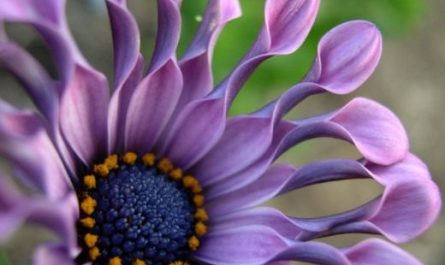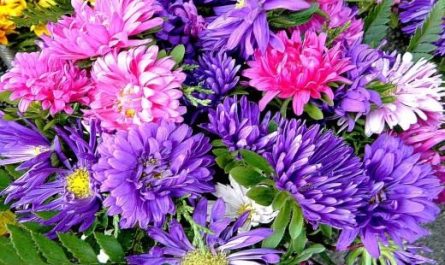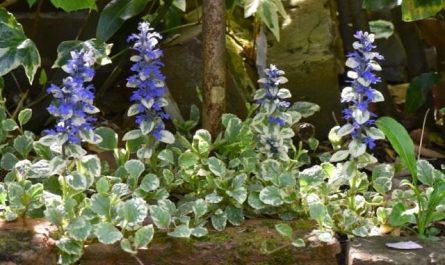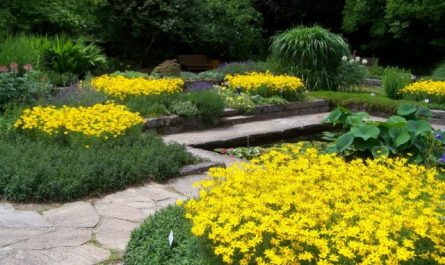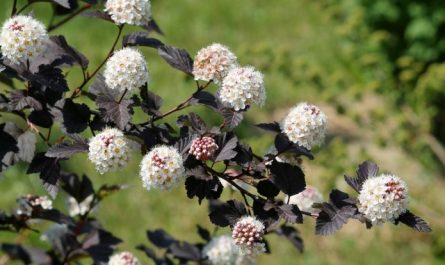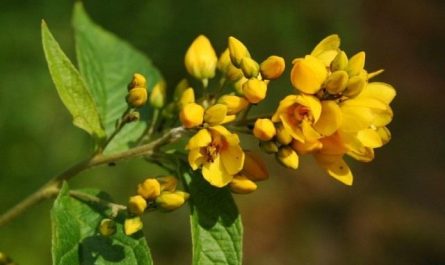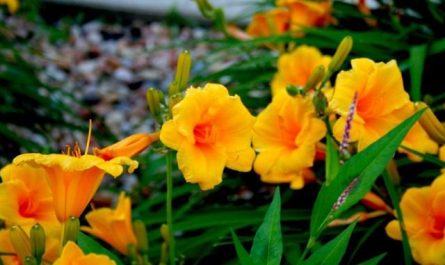At first glance, cynoglossum can easily be mistaken for a relative of forget-me-nots. The unique soft blue color, pure amethyst tones of simple small flowers, and indeed, are similar to some of the most classic garden plants. But cynoglossum is a plant of a different flowering nature. It blooms not for a couple of weeks in the spring, but literally the entire warm season. During a long parade, lush bushes are covered with a lacy foam of flowers, captivating with beautiful details and abundance. Despite their fairly large size, cynoglossums give the impression of elegance, placing graceful and touching accents.

Blackroot is a smart summer flower in maxi format
In our country, Cynoglossum is almost unknown under its botanical name. One of the most spring-like, in appearance, and abundantly flowering annuals is lovingly called black root among gardeners and summer residents. Despite the fact that there are more than 55 species in the Cynoglossum genus, only one species is mainly used as an ornamental crop – Cynoglossum amabile. All over the world, it is also known as Chinese forget-me-not, but in our country this name is rarely encountered.
One of the main features of cynoglossum is its fairly large size. Even the most modest bushes grow up to 40 cm in height, and the best varieties even boast a meter-long clump. Blackroot has lanceolate, narrow leaves, sit opposite, slightly pressed to the shoots. The surface of the leaves is rough. Dense fluff covers both the leaves and stems, due to which the basic light color of the greenery seems grayish.
The flowers of the black root are pleasant in diameter and reach 2 cm. In shape, they really resemble forget-me-nots, with a prominent center-eye of not too contrasting color and delicate, rounded petals. Flowers do not bloom one by one, but are collected in unusual inflorescences in the form of curls. Their unusualness is not only in shape, but also in the constant increase in the number of flowers: in one inflorescence their number reaches 40 pieces.
Cynoglossum blooms for a long time. It starts not in June, but only in July, but its splendor fully compensates for such a delay. And the fact that the plant does not slow down until September will not even let you feel the difference from other annuals.
Despite the fact that cynoglossums have become famous as spectacular annuals with rare blue colors, the range of colors of this plant is not limited to pure shades of blue. Cynoglossum has no less beautiful pink varieties, the color of which cannot be called anything other than candy.
In addition to the basic species plant, there are several cultivated forms of Cynoglossum amicus:
- charming sky-blue Cynoglossum ‘Firmanent’ with a more lush, squat bush up to 40 cm high;
- An intensely amethyst cultivar, ‘Blue Shower’, growing to 60-70cm, but with sparser flowers.



Today you can find other types of Cynoglossum on sale.:
- German blackroot (Cynoglossum germanicum) has a wilder appearance and rarer flowering, fitting well into the mixed grass of landscape groups;
- Wallace’s black root, or Imeretian black root (Cynoglossum wallichii var. glochidiatum, synonym Cynoglossum imeretinum) with dense pubescence, giving the whole plant a gray color, thin lanceolate leaves and bright blue flower corollas;
- Blackroot (Cynoglossum asperrimum), which reaches a height of one meter and is distinguished by its larger and more delicate leaves;
- Mountain blackroot (Cynoglossum montanum) is a shorter plant with bright, hairy leaves and delicate blue flowers.
Any black root is a wonderful honey plant. And even if its aroma does not fill the garden with a cloud of fragrant overtones, it will attract many insects. In addition, cynoglossum is also a valuable medicinal plant, actively used in folk medicine. But self-collection of raw materials is risky: along with medicinal species, there are also poisonous forms of cynoglossum, which can cause severe intoxication. Cynoglossum pleasant has unique insecticidal properties: it repels rodents and can be used at the end of the season to protect young trees and shrubs from their winter raids.
Use of black root in ornamental gardening
Cynoglossum is considered a rare annual. And it certainly does not deserve such inattention from gardeners in regions with harsh winters. This plant is spectacular, and although it is not the brightest, it is certainly not unremarkable. The magnificent decorative qualities and amazing spring enthusiasm that cynoglossum brings to flower beds and borders cannot be reproduced by any other annual plant. And the hotter the weather, the closer autumn – the more graceful and as if transferred from another season by magic the black root seems.
Cynoglossum is suitable for:
- decoration of mixed compositions, adding accents to flower beds and mixborders;
- to cover bald spots and gaps in rows of tall perennials;
- in high and lacy borders;
- as a lacy spot on the lawn or near a seating area;
- in pot culture on balconies and terraces (low-growing varieties);
- as a cut plant (can last for several weeks in living bouquets).
The best companions for Cynoglossum: zinnia, verbena, echinacea, matthiola, asters, snapdragons

Conditions required for black root
Blackroot feels good in any light location. It is not afraid of even bright sunny places with a southern orientation, but at the same time it tolerates light shading. In addition, this plant is not afraid of drafts. Therefore, it is easy to choose a place in the garden for cynoglossum.
The plant does not make any special demands on the soil. Any garden soil with a good level of drainage is suitable for blackroot. The main thing is that the reaction is not acidic, but alkaline. Neutral soil is also suitable, but on it, cynoglossum may bloom less luxuriantly in the run-up to autumn. When planting, it is enough to add slaked lime to improve the soil.
Planting black root
The optimal distance to neighboring plants is from 20 to 40 cm, depending on the maximum height of a particular variety of cynoglossum.
Cynoglossum Care
One of the main advantages of cynoglossum, which even overshadows the duration of flowering, is its drought resistance. This is a crop that requires minimal care, but it will still need watering. A long absence of moisture affects flowering, its abundance and the beauty of individual flowers. For black root, it is enough to carry out several procedures over the summer, compensating for too much heat and prolonged drought.
Cynoglossum will also not need additional feeding. Especially if the plant is planted in nutritious, high-quality soil. But if you can water the plant with a solution of complete mineral fertilizers 2 times a season, then the flowering of black root will become even more beautiful. Additional feeding is carried out with a standard dose of fertilizers at the very beginning of active growth and at the start of the flowering period.
Cynoglossum does not need pruning or shaping. This plant, with the right selection of growing conditions and at least minimal care, independently forms not only compact, but also lush, very neat bushes.

Blackroot Pest and Disease Control
Unlike many annuals, black root will not cause problems with disease prevention. And it does not attract pests, demonstrating enviable resistance.
Propagation of black root
Cynoglossum tends to self-seeding; sometimes pleasantly, and sometimes not so much surprising with the speed of its spread. This quality is an irreplaceable source of the effect of improvisation for compositions in landscape styles. But in ensembles where such spreading is undesirable, cynoglossum should be used with caution. Young shoots can be transplanted, using as seedlings.
But the main method of propagating blackroot is still sowing for seedlings. It is better to sow the seeds of this plant in large containers or boxes, using a loose, fertile substrate. The optimal time for sowing is the third ten days of March or the first ten days of April. The seeds should not be deeply buried: after scattering on the surface of the soil, they are only covered with a thin layer of sifted soil. They can germinate only in the dark, under glass or film, in a temperature range from 18 to 24 degrees Celsius. Fragile seedlings need careful, gentle watering, which should be done only as the substrate dries out.
The seedlings can be brought out into the light only after the shoots have emerged together. In this case, the glass is removed as the plants grow, and picking is carried out after several pairs of true leaves have appeared.
Planting seedlings in open ground can be done already in early May: cynoglossum is not afraid of light short-term frosts, there is no need to plant it at the end of the month or in June. Before transplanting, seedlings need to be hardened for 1-2 weeks in the garden.
You can sow black root directly into open soil. Scatter 3-5 seeds in one nest, immediately placing them at a distance of 25-30 cm between the groups. The shoots will appear in 2, sometimes 3 weeks. The advantage of sowing directly into the soil is the plant’s greater resistance to heat, drought, and nighttime cold snaps.


